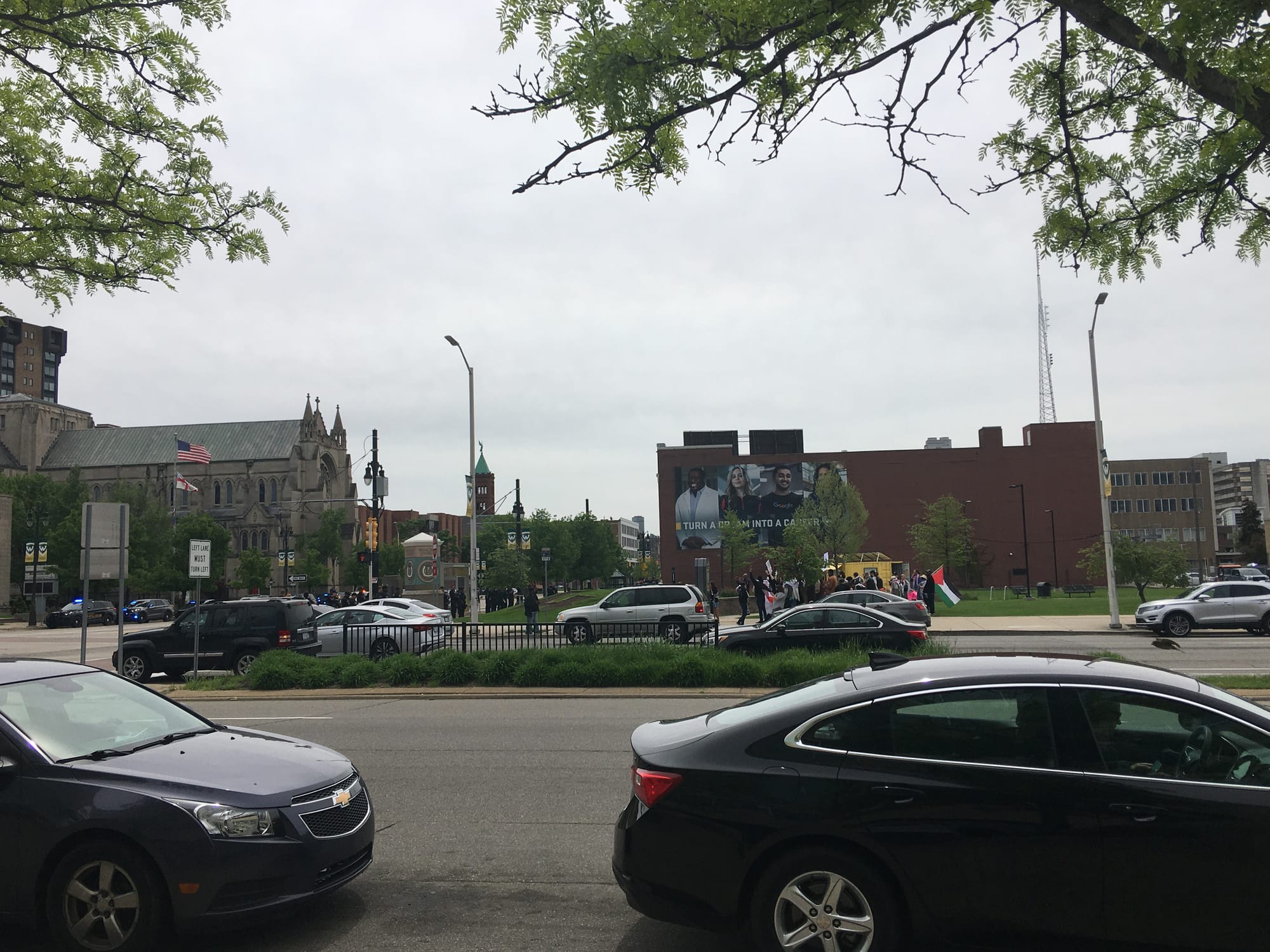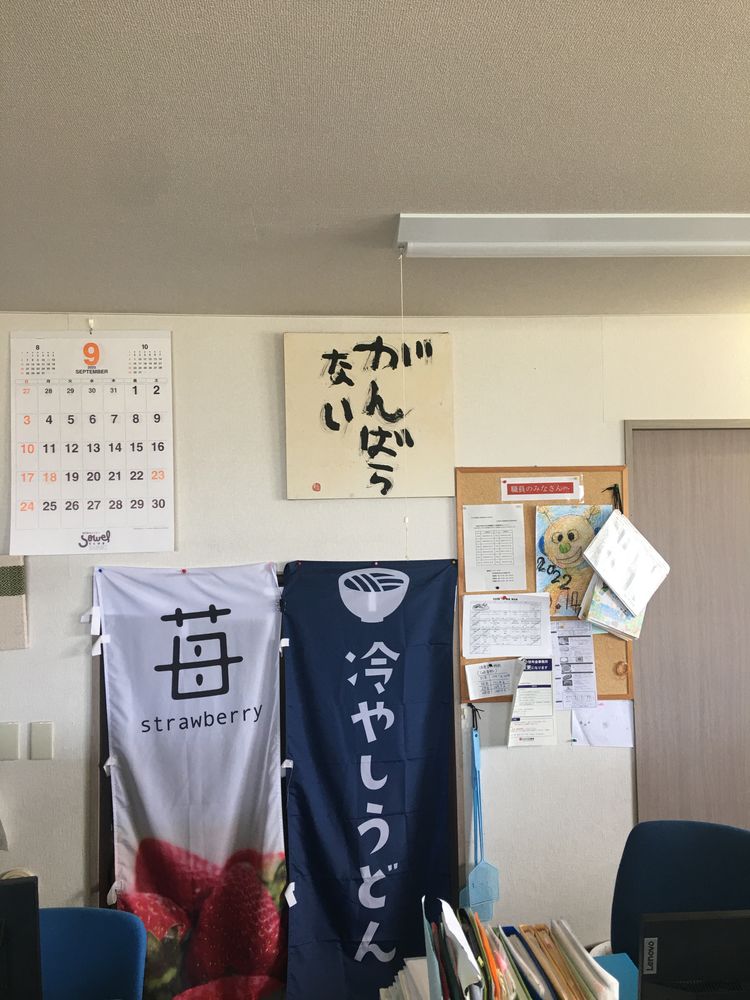Reflections from the Field: Crossroads
I was on my way to my academic department building, to say my final goodbyes and drop off keys as I prepare for my move to Baltimore (I am moving programs to Johns Hopkins University in the Fall), I noticed one too many police cars slowly drift around the corners of the street.
I live in Detroit, right by campus. It is nothing unusual to see cops. Yet this occasion felt different.
As I continued my stroll in the beautiful spring weather, as the breeze helped obscure the stench of the cars whistling by, I encountered a small protest for Palestinian liberation and freedom.
Perhaps there were 15-20 people, some wrapped in Palestinian flags, others in a keffiyeh. Touched by this unexpected sign of solidarity, I took out my phone to send a picture to my partner. To perhaps share a sense of grounded-ness in our mutual anguish at the state of the world.
After taking a few snaps, I noticed a black wall at the corner of the screen. It was a line of police, physically blocking the road in front of the rally.

Day after day, here in the United States (and of course elsewhere ), we are seeing similar encounters. Two distinct paths of people converging, perhaps a sort of crossroad.
Oneside, often colorful. The other, often monotone. An absorbing intersection, as the colors slowly get ushered and thrown into the dark, lifeless police cars. Creating a perpendicular geometry: A black line running one way across the entire canvas, and another colorful line abruptly stopping at the face of the black line.
Crossroads are quite interesting to ponder upon. Literally speaking, if one turns at a crossroad, their entire path alters. A significant turn.
Figuratively speaking, the image of the crossroad is often utilized to depict significance. A moment of change.
Yet despite both the literal and figurative use of the word, crossroads are often insignificant. Who remembers crossroads on a trip? It's merely a signpost for the next destination. A moment where one is forced – for safety, for reassurance, to obey the law – to look to a different direction, making sure some other person, car, or event is not flying into your path. Yet, when the road ahead turns into a straight path again, the crossroad is forgotten. Only when the crossroad appears does it create a rift in one's behavior or thoughts.
We are at a crossroad, a moment that requires our holistic attention, but a moment that will be forgotten. There is a forceful turn, being absorbed into the black line, that is occuring. Some are lucky to jump across the line, maintaining their color, on the other side. Yet once they are there, perhaps they forget the immense change of focus required when standing at the crossroad.
It is not forward – as so espoused within our modernistic thought – that is a road to proceed on. As once we move forward, the crossroad can lose its salience. It is a stop that is necessary, to create the moment of the crossroad into a signficant event.
![[Guest Post] Exploring Colonial History through Art](/content/images/size/w750/2023/11/graphite-island-banner.png)

![[Guest Article] On Grossman: How a Pseudoscientist Pushed Our Understanding of Killing Back 20 Years](/content/images/size/w750/2022/09/256297-1330622535.jpeg)